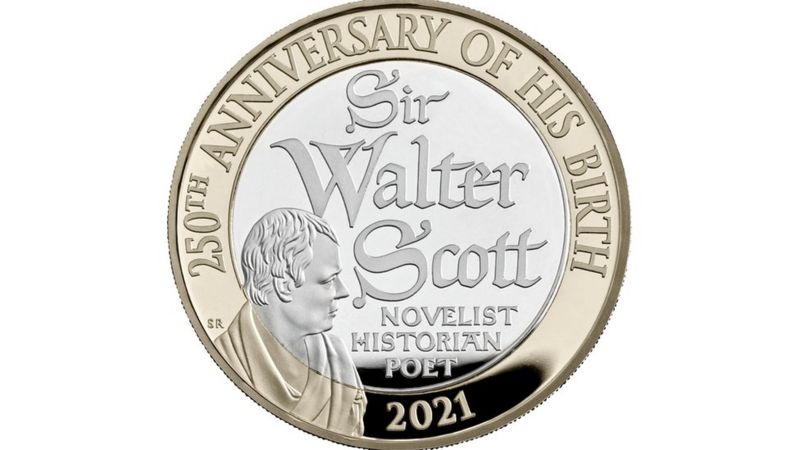Tuesday, January 19, 2021
‘You are not of the masons.’
Sunday, January 17, 2021
‘Masonic Con 2020-ish’
Tuesday, January 12, 2021
‘The library of Alexandria’
Sunday, January 10, 2021
Died #otd: Chester Arthur Burnett
Thursday, January 7, 2021
‘Pure Ancient Masonry T.O. style’
Wednesday, January 6, 2021
‘An imaginary school of Masonic instruction’
 |
| Walter Leslie Wilmshurst |
Tuesday, January 5, 2021
‘Royal Mint honors famous Freemasons’
Saturday, January 2, 2021
‘1785 Masons’ Hall is ready for its close-up’
Friday, January 1, 2021
‘Shriners movie due this year’
Sunday, December 27, 2020
‘British Freemasonry, 1717-1813’
Friday, December 25, 2020
‘Grand Lodge safely half mile from blast’
The headquarters of the Grand Lodge of Tennessee, on Seventh Avenue, is only about half a mile up Broadway from the explosion site, reported to be 166 Second Avenue. I’ll guess its windows shook for a few seconds. (The Prince Hall Grand Lodge is very safely distanced in Memphis.)
The afflicted area is a tourist destination of significant Music City sites, including the Ryman Auditorium.
Wednesday, December 23, 2020
‘Congress as a Prince Hall research resource’
Good morning members of the Masonic Library and Museum Association. I wish to share the link to a LibGuide on Prince Hall Freemasonry:
Please note that these are selected resources, and the guide will be updated early next year. (We did not include items where the bibliographic record indicated “missing” or “being processed.” I would be most grateful if you would share with the members of the Masonic Library and Museum Association. Also, if members’ collections contain any manuscripts/collections relevant to Prince Hall Freemasonry, would you please let me know?
Sibyl E. Moses, Ph.D.
Reference Specialist and Recommending Officer
(African American History and Culture)
Main Reading Room
Researcher and Reference Services Division
Library of Congress
101 Independence Ave. SE
Washington, DC 20540-4660
202-707-0940
Tuesday, December 22, 2020
‘Trump issues architecture order’
Monday, December 21, 2020
‘MBC’s first offering announced’
Friday, December 18, 2020
‘The Tiler as guardian of our moral compass’
- “To protect our moral selves.”
- To ensure the candidates are prepared properly.
- “To give the proper reports on the door of the lodge.”
- To wield the implement of his office as it is the embodiment of the tng of gd rpt.
Monday, December 14, 2020
‘New media for Royal Arch’
Friday, December 11, 2020
‘Hail the Men of the Malt!’
Thursday, December 10, 2020
‘Launch of Prince Hall cigars’
Prince Hall by Blanco Cigars are manufactured in Estelí, Nicaragua by Blanco Cigars at the family’s factory, and blended by Master Blender and fifth generation Master Mason David Blanco.
The genesis and creation of the brand started over a year ago, but due to COVID-19, is just now making its way to market as a regular production cigar. The impetus behind the brand was a desire to recognize and honor a great man and legend in the history of the United States and Freemasonry: Prince Hall. He was known as one of the most influential free black leaders during the founding of the United States in the 1700s, fighting slavery as one of the leading abolitionists and for equal education rights. He is also famously known as the father of Black Freemasonry which, to this day, is known as Prince Hall Masonry.
Habano Maduro
A full body cigar with rich, robust flavors and aromas. Including notes of leather, wood and earth with a floral bouquet and hint of spice throughout the retro-hale. Culminating with a clean, smooth finish.
Wrapper: Habano Maduro (Nicaragua)
Binder: Sumatra
Fillers: Nicaraguan
5 x 50 Square
6 x 52 Compass
6 x 60 Level
7 x 70 Boaz
Habano Rosado
A medium body cigar with complex notes of oak, leather and caramel with a pleasant floral aroma. Culminating in a slightly sweet, creamy, textured smoke with a clean, smooth finish.
Wrapper: Habano Rosado (Nicaragua)
Binder: Nicaraguan
Fillers: Nicaraguan
5 x 50 Square
6 x 52 Compass
6 x 60 Level
7 x 70 Jachin
Square, Compass and Level sizes come in 50 count boxes and are also available five packs.
Wednesday, December 9, 2020
‘New QCCC Local Secretary’
Over in New Jersey, one of the research lodge’s very own has been tapped to serve Quatuor Coronati Correspondence Circle. Congratulations Bro. Erich! He’s the new Local Secretary.
QCCC is the corporate arm of Quatuor Coronati Lodge 2076, and it serves to unite Freemasons wherever dispersed around the world in a membership that receives Ars Quatuor Coronatorum, the annual book of transactions published by the lodge.
Welcome to Erich Huhn,new Local Secretaryin New Jersey
Erich Morgan Huhn is a PhD student in History & Culture at Drew University, Madison, New Jersey. His research focuses on the historical role of membership as a ‘placing marker’ within society, with a particular interest in the history of Freemasonry in the English-speaking world.
Erich’s upcoming capstone paper will examine the role music has played in Masonic culture. Erich has presented on various Masonic topics, collects rare Masonic texts, and in 2019 published New Jersey’s Masonic Lodges, which provides a photo guide analysis of the development of Masonic architecture from the Colonial period to the present. Erich was raised as a Master Mason in November 2013 and is active within New Jersey Lodge of Masonic Research and Education, No. 1786. He has also participated in QC’s North American Conferences, most recently in Alexandria.
Erich can be contacted here.
Tuesday, December 8, 2020
Tuesday, December 1, 2020
‘Azim 7 officers elected’
Monarch A. Ruffini
Chief Justice B. Neri
Master of Ceremonies E. Zaremski
Venerable Prophet B. Donlon
Secretary A. Haight
Sorry to say I couldn’t be there, but attendance was capped at ten, and I thought it better to leave room for relevant Prophets. But I’m very much looking forward to a new year of, as one Grotto history book puts it, “weird ceremonies” and “red letter days!”
Monday, November 30, 2020
‘Masonic Values Art Competition’
The results of the Grand Lodge of Pennsylvania’s 2020 Masonic Values Art Competition are announced.
Bro. Ryan’s oil on canvas, “The Master and the Apprentice,” took the Grand Master’s Prize (and sold for $2,000).
My favorite:
Read all about it here.
Saturday, November 28, 2020
‘NPR asks What is the point?’
Sunday, November 22, 2020
‘James Wasserman (1948-2020)’
The Wasserman family announced today on social media that James Wasserman had died November 18 after a long illness. Funeral arrangements are being made.
While I know nothing of O.T.O. nor of his writings on that subject, Wasserman also wrote books of interest to Freemasons, and he was a friend to the Livingston Library, and was an engaging speaker to Masonic audiences. I do not know if he was a Brother Mason. R.I.P.
Wednesday, November 18, 2020
‘CoinWeek explores the Mark Penny’
CoinWeek, an online periodical devoted to numismatics, occasionally addresses topics orbiting Freemasonry in articles about Masonic persons, places, and things commemorated on U.S. money. Last Friday though, it ran a piece not on coins or cash, but on a facet of exonumia well known to Mark Masons: the Mark Penny.
I recommend the article for the art that accompanies the text, because most of Tyler Rossi’s reporting is annoyingly bad. We can pardon the outsider’s nescience with our jargon, but it also sounds like he wants to misrepresent, such as when he claims the Craft has “a vitriolic opposition to the Roman Catholic Church.” He does cite sources, listing seven references in a bibliography, but he could have done better.
The value of this article is based mostly on the research delivered in Masonic Chapter Pennies (Vols. 1&2) by Dr. B.P. Wright from 1903 (a reprint from the July 1901 edition of The Numismatist). From there, I suppose, it is impossible to materially err.
Anyway, the article shares some exotic variations on the Mark Penny. Great, because if you’re like me, you know only the commonplace coinage from catalogs.
I’m rambling when I need only provide the link. Read all about it here.
 |
| Courtesy CoinWeek |
 |
| Courtesy CoinWeek |
Tuesday, November 17, 2020
‘Philly Temple closed’
The Masonic Temple in Philadelphia, headquarters of the Grand Lodge of Pennsylvania, has been ordered closed through the end of the year by the city government.
At a press conference Monday, Mayor Jim Kenney and Health Commissioner Thomas Farley announced a list of precautionary measures for managing the pandemic, including a city-wide ban on indoor gatherings and events, whether public or private. The order was made effective to January 1 to permit time for desired benefits of the lockdown to materialize, because a vaccine will not be available until January, and because it is thought the spread of the virus will not abate until winter arrives. It is possible the ban on gatherings may be extended.
The list of varying prohibitions also affects businesses, schools, religious sites, museums, libraries, and other destinations.
The Grand Lodge announced the closure through its social media accounts after the mayor’s press conference.
Sunday, November 15, 2020
‘Congratulations, Grand Master!’
I’ve never been, but I figure Oklahoma must be a special place since its flag depicts a smoking pipe among its symbolism. Now I know the Grand Lodge there imparts a special Freemasonry to the world, because yesterday Bro. Robert G. Davis was installed Most Worshipful Grand Master of Masons.
Congratulations, Bob!
Actually, congratulations to the brethren of Oklahoma! It is not common for a brother who you want to ascend to the top to do so. The kind of Mason who authors essential books and who lectures thoughtfully on the meaning of Masonry typically does not seek high profile office, but that is what happened here.
Who says 2020 is a bust?
I wish you a productive year unhindered by quarantine, inclemencies, smoking bans, or other troubles.
I first “met” Bob about 20 years ago in the Masonic Light group, and met him for real at the 2002 AMD Weekend in the Hotel Washington in DC. Ah, you could smoke at the lobby bar then. I noticed Bob enjoyed Hoyo Excalibur IIIs, a preferred cigar of mine as well. (I don’t know why I keep bringing up smoking. It’s just past noon here, so it’s time for a pipe.)
Bob, God bless! I’m sorry Masonic Week won’t happen in February, but I look forward to shaking your hand again soon.
Saturday, November 14, 2020
‘Civil War meeting’
Sankey Lecture on Sunday
I just learned the 2020 Sankey Lecture, postponed in March, is rescheduled for...Sunday! Free and online.























































































